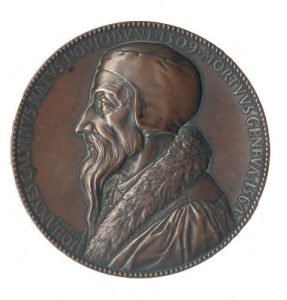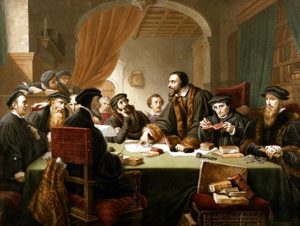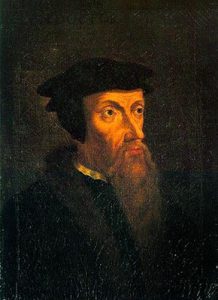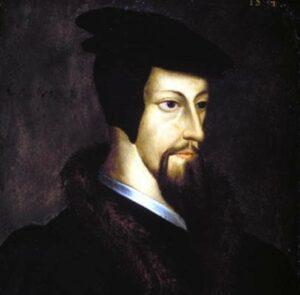The Institutes of the Christian Religion
Calvin was born one generation after Luther and Zwingli, and his task was not to offer original ideas, but to organise coherently the new vision of his predecessors. His clear exposition of doctrinal issues did much to promote those ideas.
He repeated Luther’s central message concerning free salvation through Christ for believers. He also claimed justification by faith alone, sola fide, and not by deeds. But whereas Luther’s central message was focused on Jesus-Christ, Calvin’s in Zwingli’s wake was rather focused on God, Soli Deo Gloria meaning glory to God alone.
The doctrine of free salvation is best defined thanks to the double predestination, which means that God elects some to be saved, the others to be damned. The reformed found great strength in this doctrine. It was rejoicing for the believer to know that he was elected because of his faith in God. Calvin insisted on man’s fall since the original sin to magnify God’s greatness and the blessing of salvation.
As Luther did, Calvin claimed that in the Scriptures alone truth was to be found, sola scriptura, but he used a humanistic methodology.
Like Luther and Zwingli, he rejected the purgatory, prayers for the deceased and worship of the saints, who, he believed, had no power of intercession.
Ecclesiastic ordinances
Calvin kept two sacraments- baptism and the Eucharist. He disagreed with Luther on the Eucharist and drew nearer to Zwingli. They both refused the catholic doctrine of transubstantiation. Luther believed Christ was present in the bread and wine of the communion, whereas for Calvin Christ was present during the Holy communion but only through the Holy Spirit and the believers’ faith.
In his ecclesiastic ordinances Calvin asserted his ecclesiology proclaimed in Geneva in 1541.
He organised the Church and its connections with the civil authorities. These foundations of the reformed Church are still present today in the four ministries – i.e. pastors, doctors, elders, and deacons.
Calvin separated the power of the Church from that of the civil government. The Church acquired some independence from the State.








